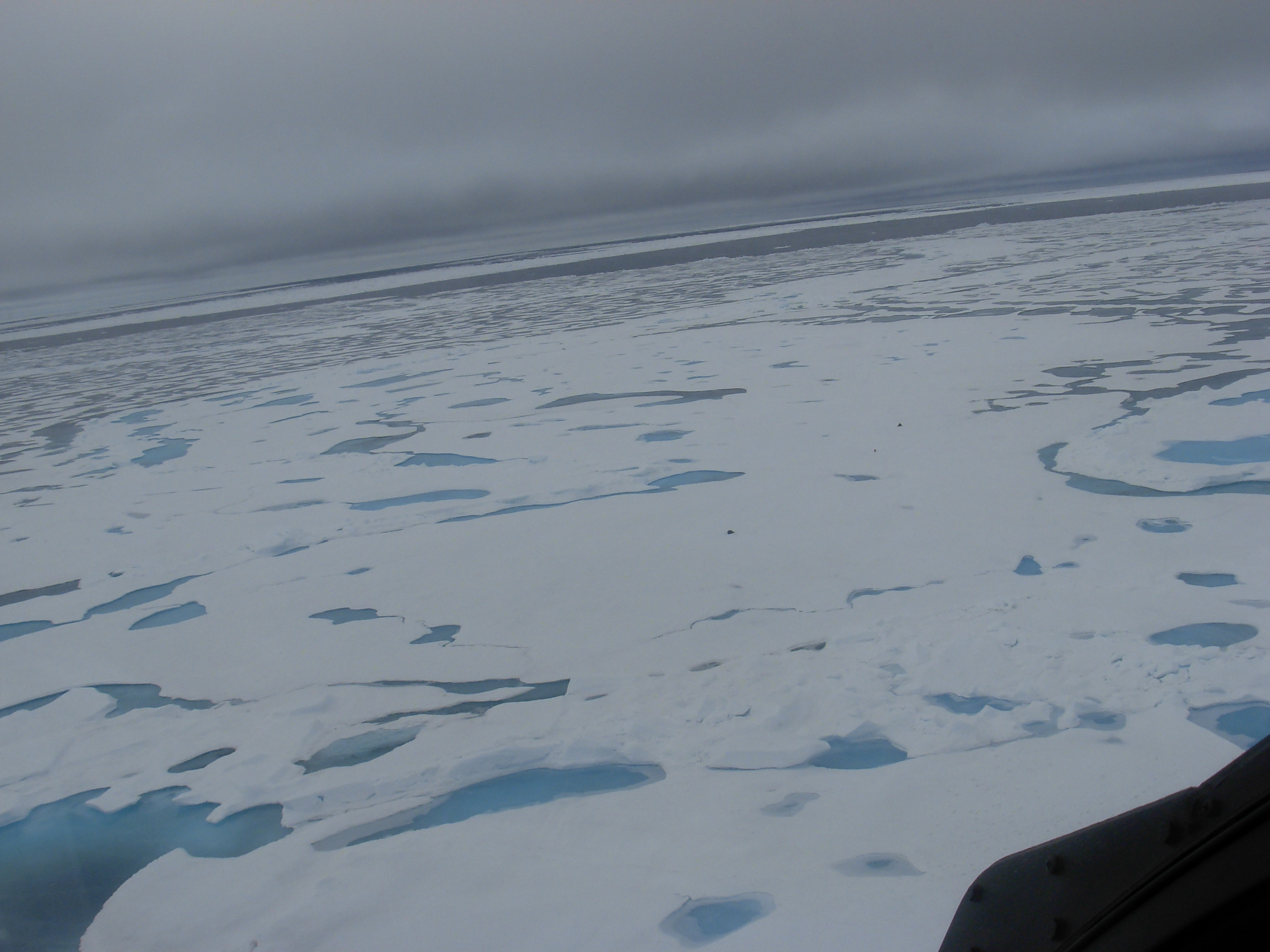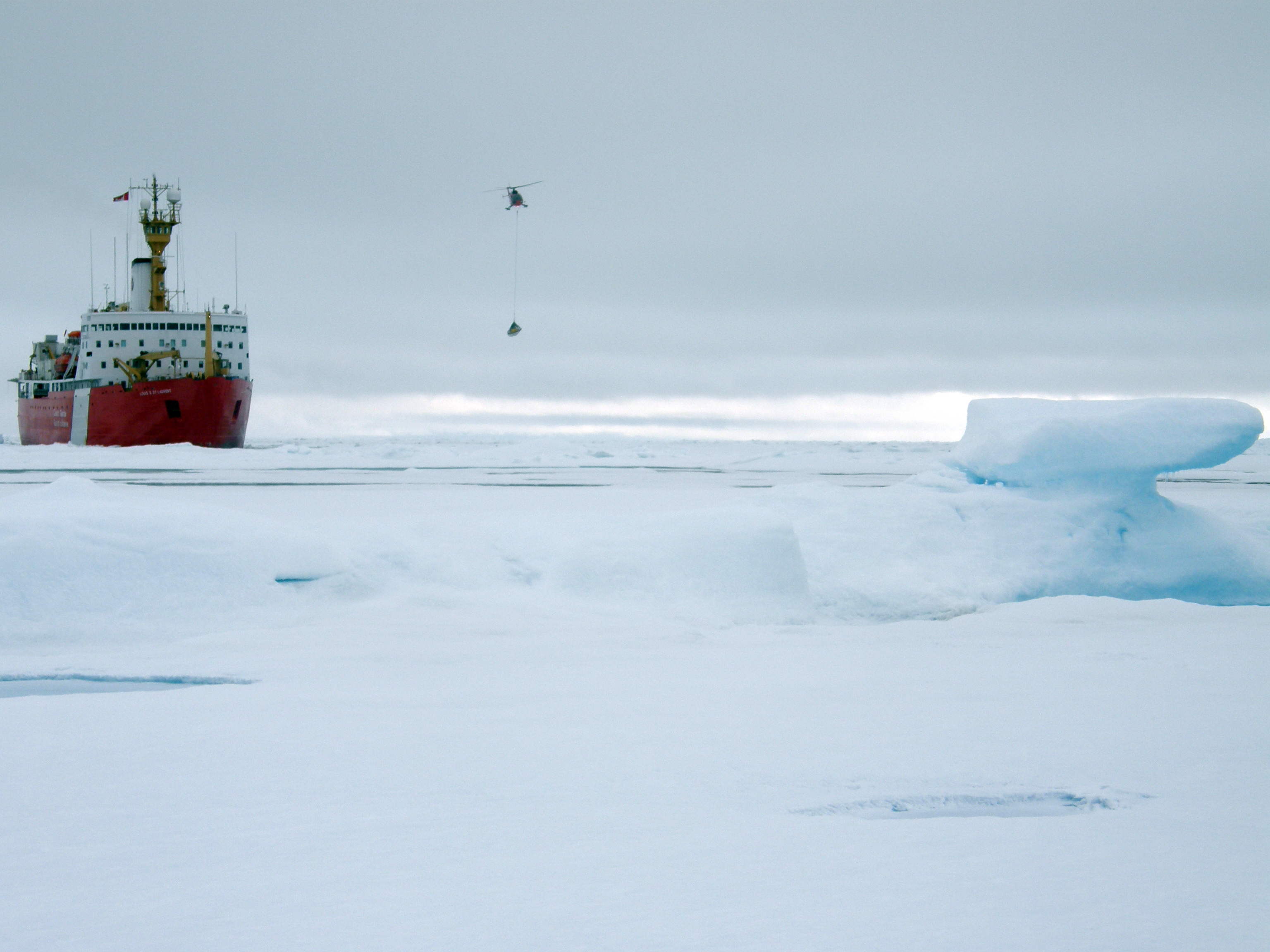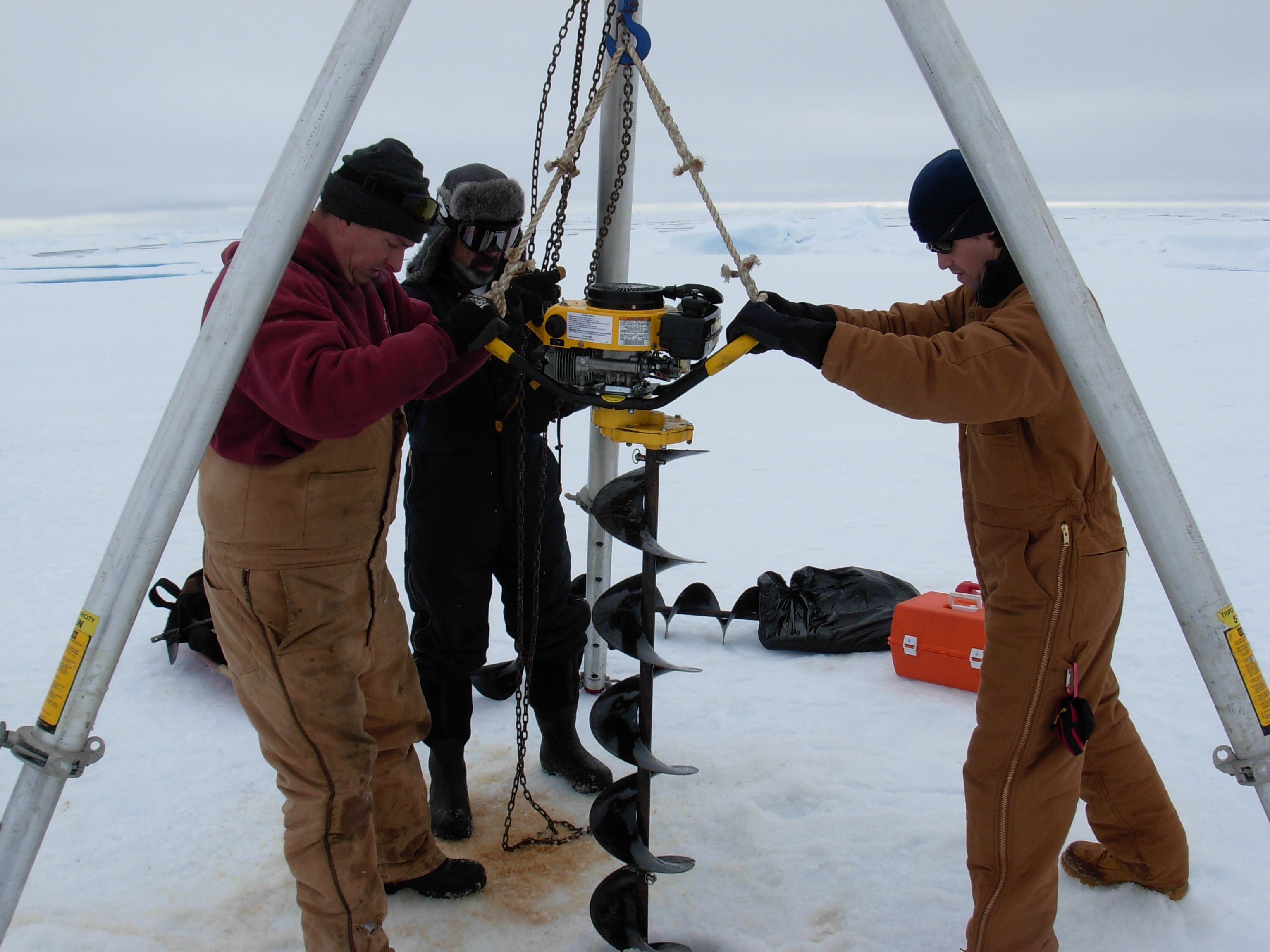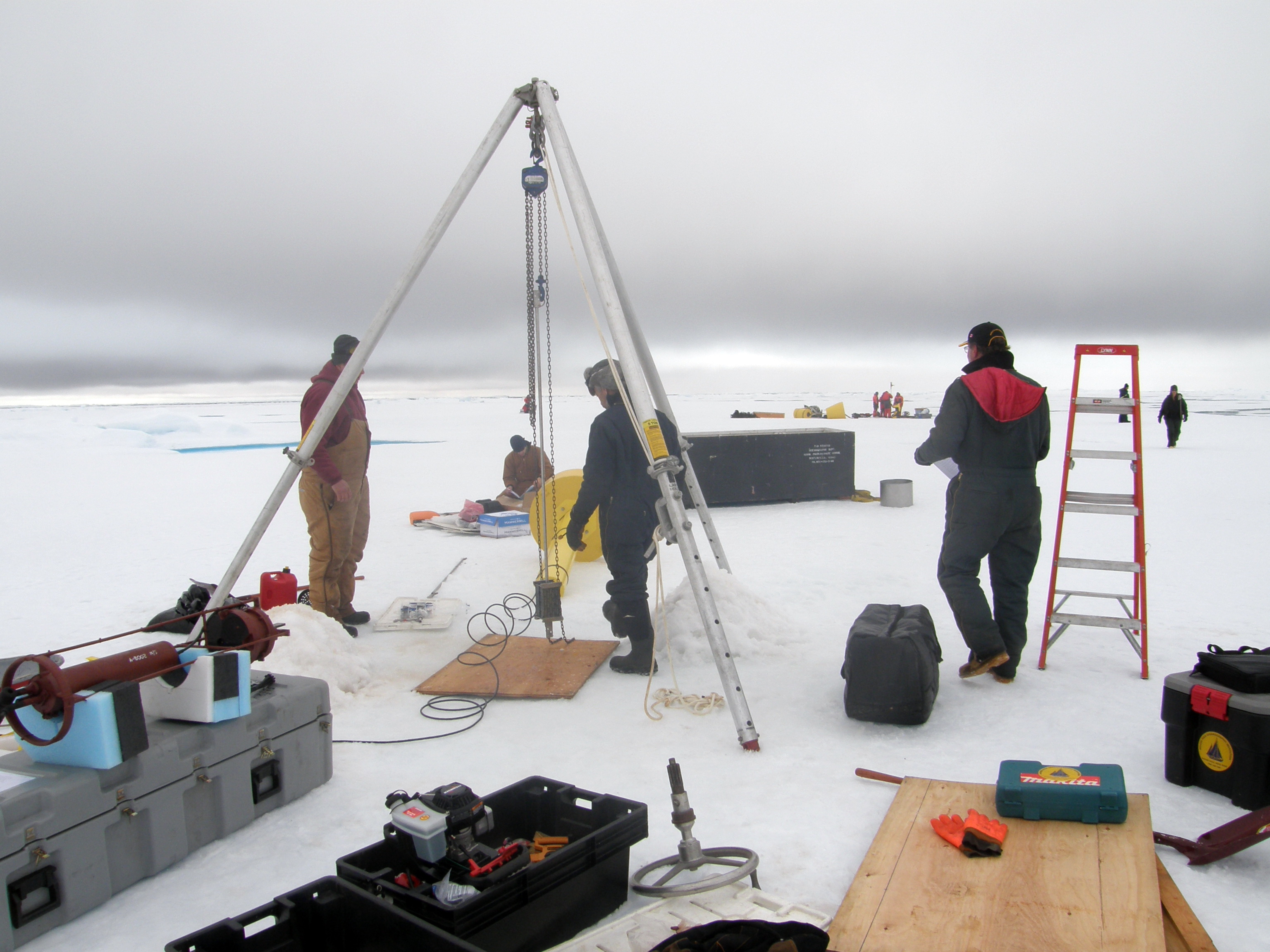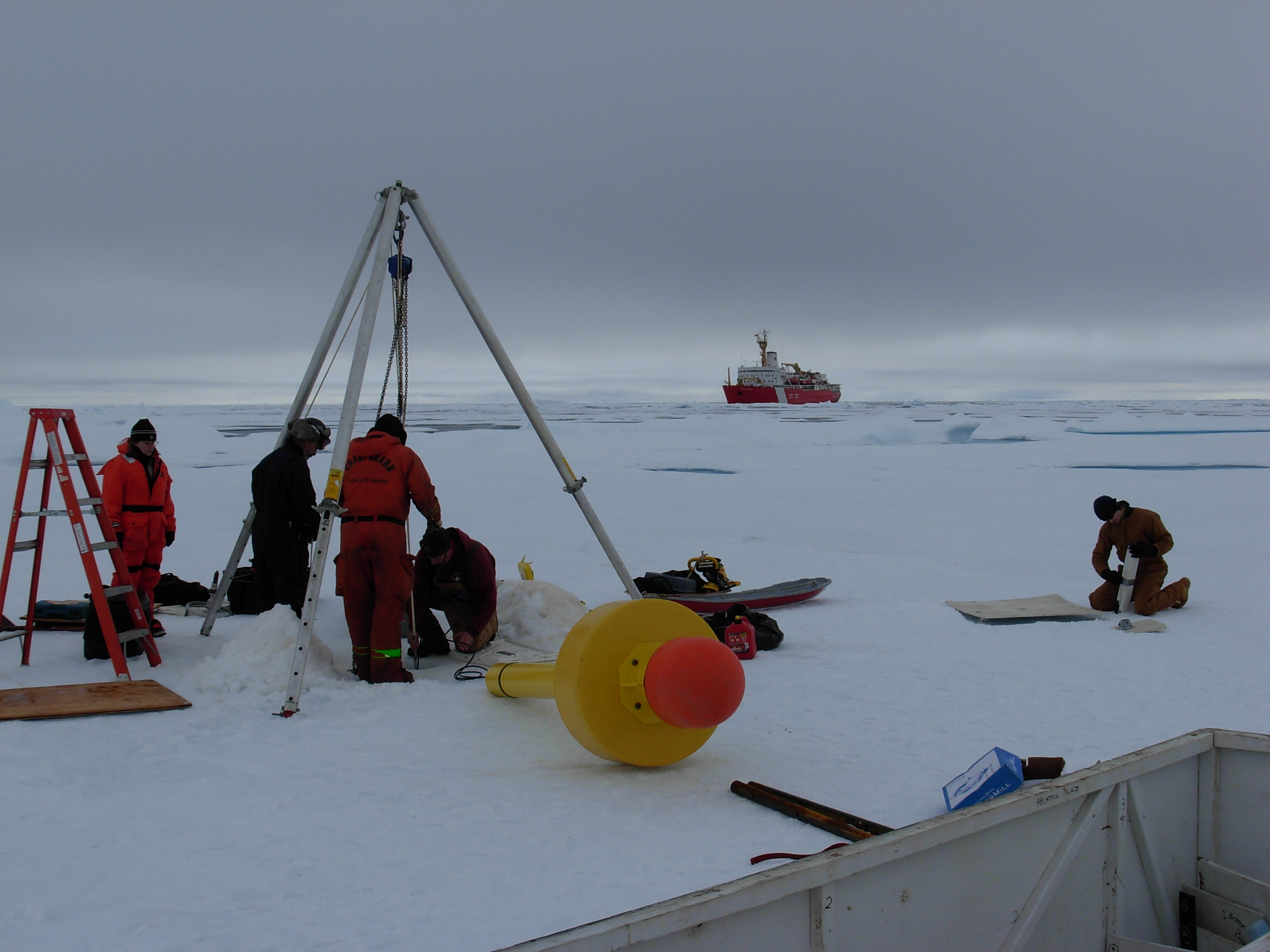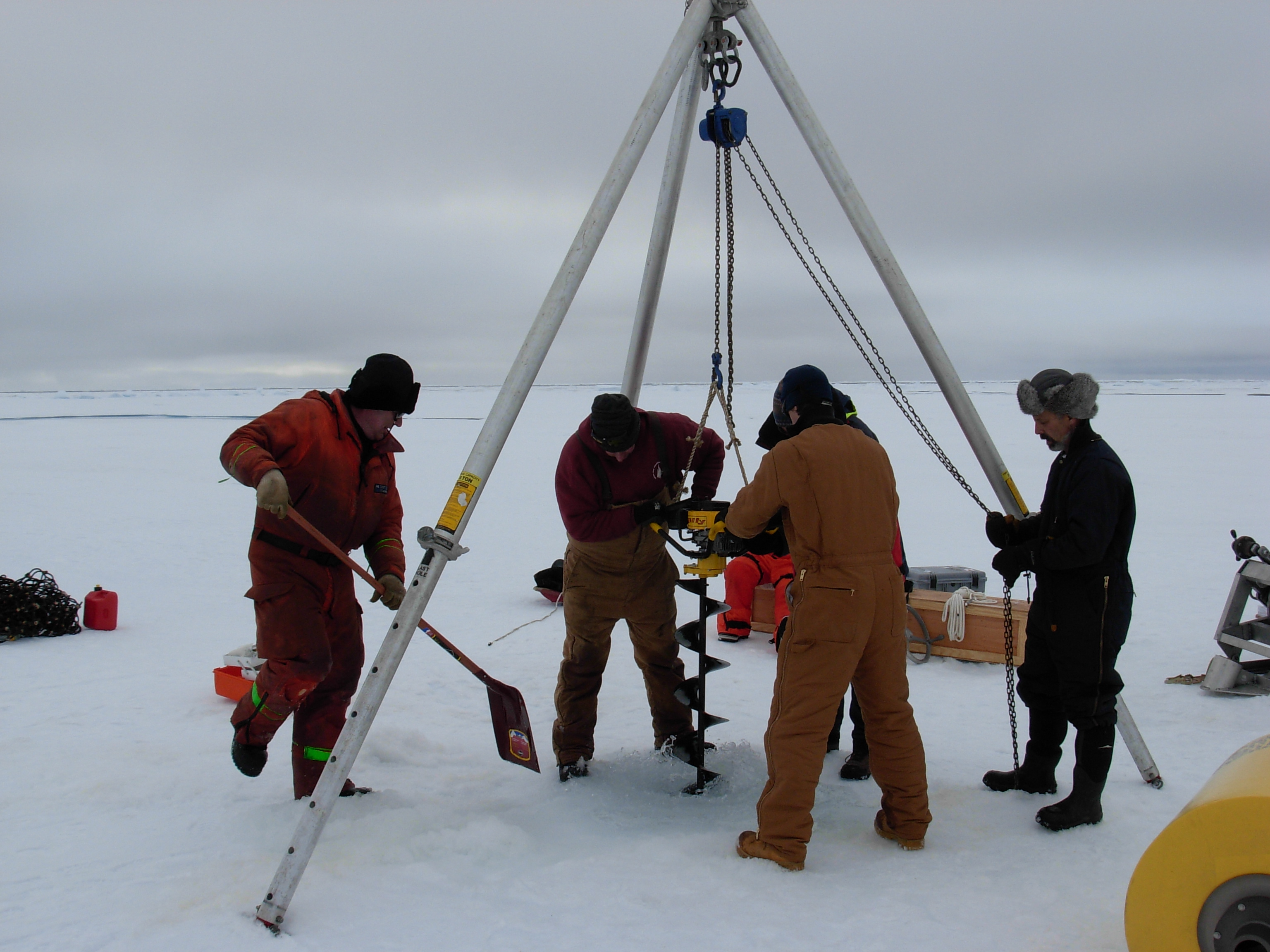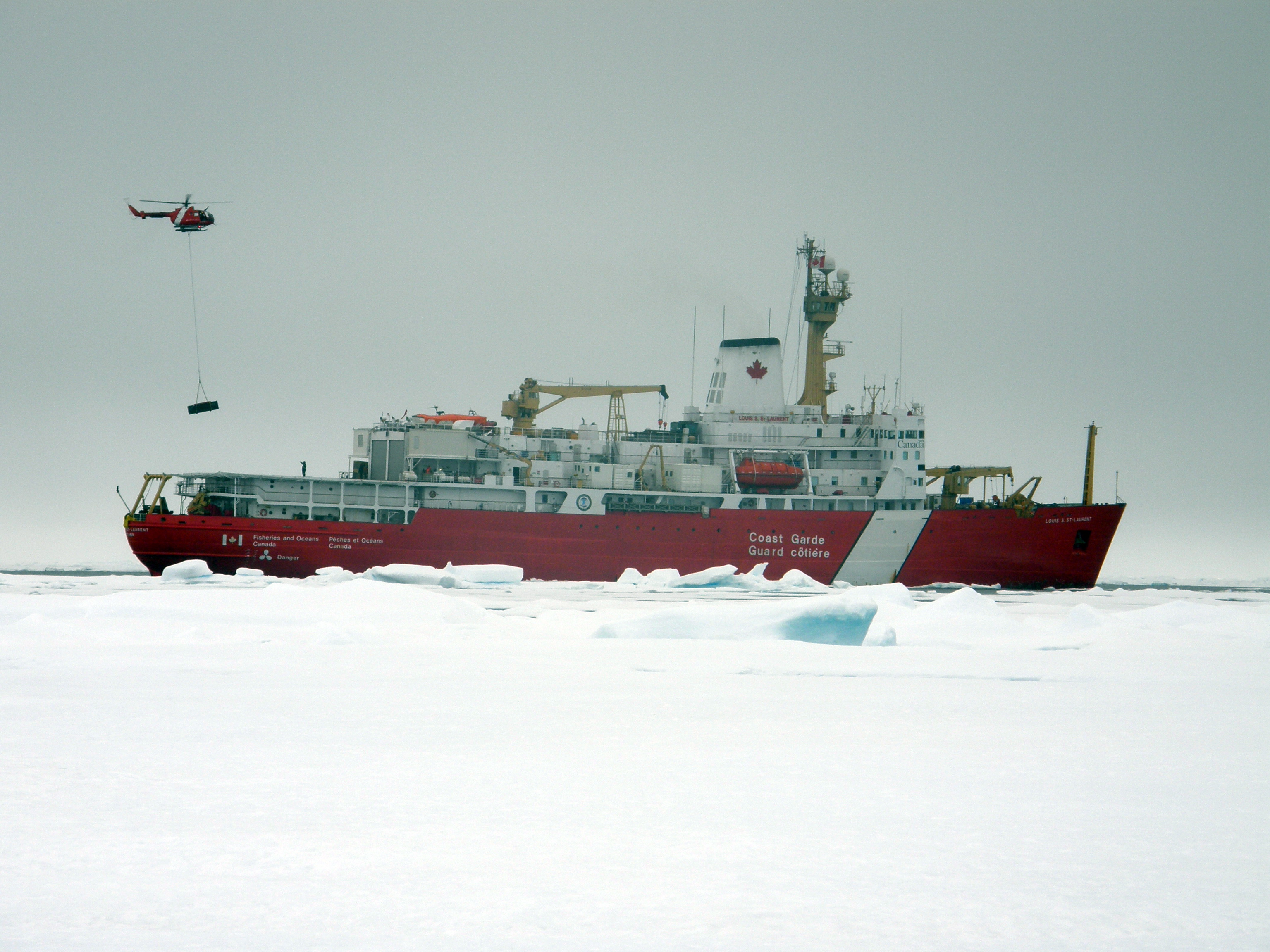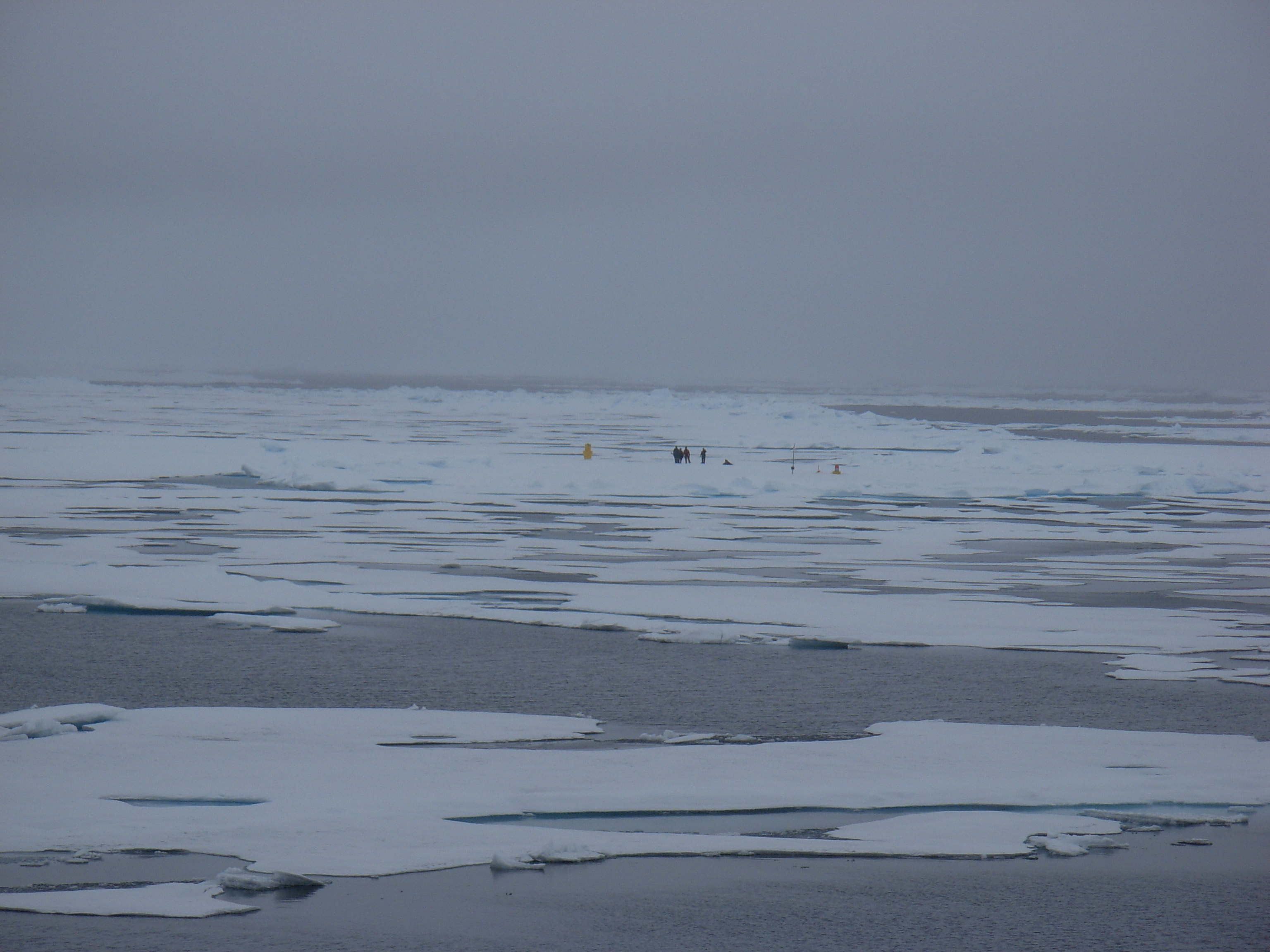ITP 23 Deployment Operations
One day later and 120 miles north of the deployment of ITP 21, the ice conditions were still surprisingly thin and broken near 82° N latitude with only patches of remnant floes or old worn ridges from previous years. On morning reconnaissance to select the next ITP deployment site, the first landing of the helicopter was on a rafted floe (2 stacked floes) more than 5 m thick. The next landing site was too thin so also unacceptable, but finally a peanut-shaped floe that measured 4.07 m thick (with 0.34 m freeboard) on one side and 1.74 m thick on the other was selected. Rubble ridges 1-3 m thick surrounded the thick sides of the floe.
A few hours later, the operations began, all of the gear and personnel were transferred to the ice by the helicopter, and the AOFB was deployed on the thick side of the ice floe in 3 hours, with ice thermistor string installed at a spot 3.8 m thick. ITP 23 was deployed 80 m away on the thin 1.90 m side of the ice floe a little more than 2 hours later, and all of the gear and personnel were returned to the ship by the helicopter.
